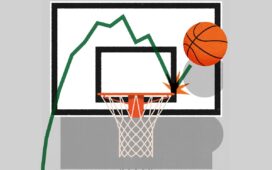Our curated rankings of the best mutual funds were created by screening funds for several must-have metrics:
- AUM. All funds on this list have accrued at least $10 billion in AUM, with many sporting much higher AUMs over this minimum.
- Expense ratio. To be eligible for this ranking, funds must charge a net expense ratio of 0.04% or less.
- Strategy. Each mutual fund on this list is passively managed by tracking an external benchmark index and is not actively managed.
- Diversification. Funds on this list have a broad market focus by targeting U.S.-listed stocks from growth and value styles, from more than one market cap size, and most of the 11 stock market sectors.
- Minimum investment. All funds on this list have a minimum investment requirement of $3,000 or less.
- Fees. No funds on this list charge sales load, transaction or 12b-1 fees.
- Turnover. All funds on this list have an annual portfolio turnover rate of 4% or less.
Our methodology helped identify mutual funds that charge low fees, have operated for a long time, possess high diversification, incur minimal turnover and offer a passively managed indexing strategy.
Remember that what ultimately constitutes the best mutual fund depends on your risk tolerance, investment objectives and time horizon.
An experienced fund analyst selected the funds above, but they may need to be right for your portfolio. Before purchasing any of these funds, do plenty of research to ensure they align with your financial goals and risk tolerance.
Why other funds didn’t make the cut
To compile the top U.S. mutual funds, we screened for those demonstrating economies of scale, popularity and robust track records. The funds on our list come from three prominent asset managers: Vanguard, Fidelity and Charles Schwab.
We set an expense ratio cap of 0.04% to identify the most affordable options. “Expense ratios directly impact the return to the shareholder,” said Emily Cozad, portfolio manager and research analyst. Then, we excluded funds with sales loads, 12b-1 fees or excessively high minimum investment requirements. This helped ensure accessibility and cost efficiency.
Our criteria also eliminated narrowly focused funds, such as those concentrating solely on large-cap, value, dividend or specific sector stocks. This allowed us to focus on funds that offer broad market exposure and are adaptable to various investor needs.
Finally, we selected passively managed funds that track a benchmark index, as research shows most active funds underperform. An S&P Global study found that 88% of U.S. large-cap funds trailed the S&P 500 index the past 15 years.




